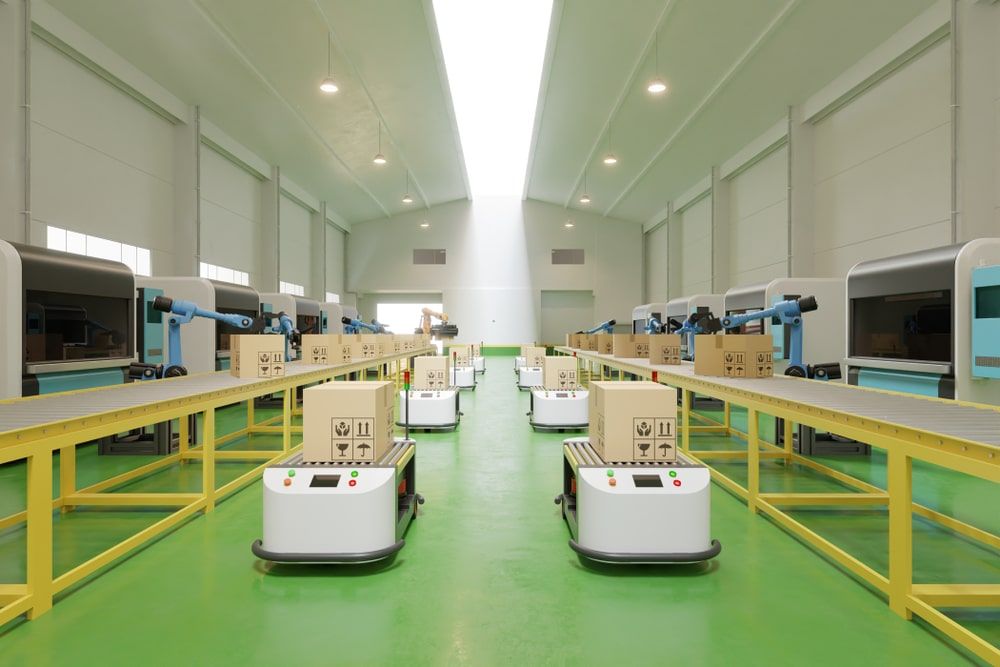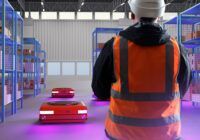Obstacle detection is all about finding and identifying obstructions in the path of a moving object. Systems for detecting obstacles would be of so many types, but the most popular are sensors and 2D or 3D vision detection systems which can be employed across various fields. The evolution of IoT, AI, and Robotics technologies has made these systems much more accurate and reliable. Smart robots, intelligent vehicles, and autonomous agricultural vehicles are used as obstacle-detection cameras.
Obstacle Detection System Types
There are two methods incorporated into the process of obstacle identification such as:
Camera-based Technology:
One of the most popular obstacle identification systems is a camera-based technology. Cameras used for vision systems cameras can spot a variety of obstructions, including people, and vehicles. However, weather conditions like fog or rain need a camera with high definition, which may be costlier than the sensors.
Sensor-based Technology:
Another type of obstacle detection sensor system is a sensor-based technology. Systems based on sensors use a variety of traditional sensors such as laser, radar sensors, optical devices, ultrasonic sensors, and infrared sensors. The fundamental aspect of laser radar sensors is that the time interval between laser emission and reception may be calculated to provide distance information. Since it employs lasers, they are sometimes more expensive than other sensor-based solutions which are generally used.
Types of the Vision System
There is a huge variety of vision systems on the market, each with varying degrees of flexibility, performance, and price. Based on the components, they are in the vision system. There are three categories into which vision systems are identified:
Vision Systems using Cameras:
Smart cameras use sensors, CPU, and I/O. These establish a straightforward interface that simplifies the operation and requires less or no training. A computer is connected to the smart camera to configure monitoring of the inspection activities. Smart cameras are available in various sizes and with various operations for the user’s convenience.
Computer-based Vision Systems:
In this type of vision system, the camera is the central operating and coordinating unit which control the camera, lighting, and all other peripheral devices. After handling the camera inputs and using software to analyze the data, the computer sends the decisions to the other devices. PC-based vision systems are an option when the application calls for numerous cameras, powerful processors, or dedicated FPGAs.
Compact Vision Systems:
A “lighter” version of a PC-based vision system could be compared to the compact version system. It is based on embedded processing technology and frequently comes with a graphics card that records and sends the data to an additional peripheral device, like an external monitor, where it can be viewed. Compact vision systems typically also include a built-in graphical user interface that may be readily used with a mouse or touch screen. Compact vision systems can occasionally handle embedded inputs in addition to first-level inputs like camera and trigger inputs.
Selecting the best components for the operating system and networking would be important to get a better-performing system. Modern cameras produce a large amount of data, and the software requires fast processing; hence storage is also a matter of concern. It is important to get maximal compatibility for the best performance given the large loads by synchronizing it with cloud services. Hence select the products that best suit your need, scale, and budget.
Why is the Robotic Vision System beneficial for Better Performance?
Robotics vision technologies can be combined to create a potent automation solution that is much more capable than either traditional technology that could be used for a limited purpose. Robotic vision systems are available in various configurations and have many uses.
Typical components of robotic vision systems include one or more cameras, application-specific illumination, proprietary software, one or more robots, and occasionally a camera positioned directly on the robot’s end. Until now, most robotic vision systems were 2D, but 3D vision has emerged as a more trusted and reliable vision solution, opening up new opportunities in robotics. The main reason for using robotic vision systems is their flexibility and accuracy.
Robots are stiff and limited to carrying out activities in predetermined courses in highly controlled surroundings synchronized with the visual system. Robots’ best variables in their working environment are if they have a strong vision system. Even when carrying out in-process inspection activities, the robot can ensure that it is carrying out its duty appropriately. Industrial robots become much more dynamic when outfitted with cutting-edge vision systems.
Manufacturers looking for a customizable robotic automation solution might benefit greatly from robotic vision systems. They enhance industrial robots’ overall performance while lowering installing and running costs. Robotic vision systems have been around for a while, but the most recent 3D robotic vision technologies have increased the strength of the robotics and machine vision combo more than before.
What is a 3D Vision Camera?
A 3D vision camera is an imaging tool that simulates three dimensions as seen via human binocular vision by giving images a sense of depth. A few 3D camera sensors for obstacle detection use a single lens that changes position, while others employ two or more lenses to record different points of view. Depth perception is made possible by combining the two perspectives, just like how the two human eyes have slightly distinct perspectives.
One can use a 3D vision camera to record an immersive, frozen-in-time moment for stills or video footage in a way that makes it feel close enough to touch. Stereoscopic imaging is a technique that uses the stereoscopy principle, which is what gives objects a three-dimensional (3D) appearance.
Application of 3d Vision System
Here are a few well-known applications of 3d vision systems across different fields:
Inspection: Automated 3d vision system systems help manufacturing companies inspect product quality quickly and fasten the production cycle. To measure even tiny details of target objects, it is important to have a high-performance 3D vision camera unaffected by external conditions such as target materials or working environments. Several studies emphasize how the 3D camera is essential in addressing problems associated with robotic inspection for pipe fitting verification.
Food Industry: The food sector is one consumer industry that can use 3D machine vision technologies. Food processing, segmentation, and packing utilizing an automated machine are all examples of food automation. Nearly 94% of food packaging operation procedures employ robotics and 3d vision systems to increase production scale. Experts quote the importance of 3D color vision for enhancing food manufacturing capacities. Companies can discover more about the advantages of utilizing color point clouds and the underlying 3D technologies for their benefit.
Logistics: The growth of e-commerce rapidly increased over the previous two decades, and the demand for logistics process automation is the need of the hour. Logistics process automation involves running the respective business 24/7 without losing operation efficiency constantly. 3D vision technology helps them monitor, track, and shift the items precisely to minimize costly errors. According to the future of logistics automation, using 3D vision capabilities in almost all aspects of production. The company will employ 360º 3D vision systems to enhance security.
Bin-picking: Bin-picking is an automated vision monitoring procedure that finds, sorts, selects, and places a target object to produce the intended outcome. It is one of the most popular applications for 3d vision systems in modern warehouses and factories. In particular, for small things and irregularly dispersed materials, 3D machine vision cameras are crucial for improving bin-picking accuracy.
Importance of Low Latency Camera
High-quality, real-time image capture is made possible via low-latency streaming, which guarantees minimal lags. Learn about four crucial aspects determining low latency streaming and the situations in which it can be beneficial.
Conclusion:
The warehouse, manufacturing floor, and other areas will undoubtedly use 3d vision technologies, which can detect important motions. Thus, a person loading a truck while being supported by an extended conveyor is seen. Camera-based solutions that use excellent optics and imaging software are changing how robots and humans perceive the environment. Companies are the leader in industrial 3D sensor technology, crucial to all automation procedures, including security aspects.
Devices that can identify impediments in a robot or vehicle’s path are called sensors for obstacle detection. These sensors are frequently employed in various systems, including robotic systems, drones, and autonomous vehicles. This write-up has given you a better understanding of obstacle detection cameras’ fundamentals. If you have any questions or want information about any particular aspects of cameras and sensors, visit a trusted service provider near you.






